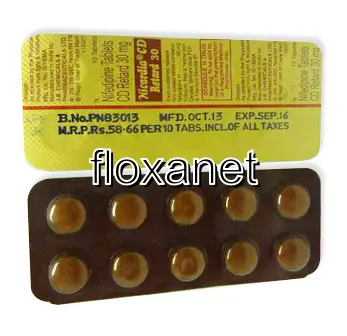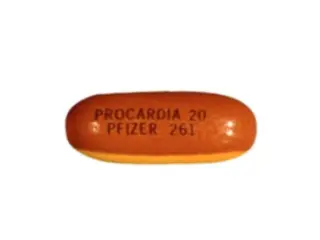| Package | Dosage | Price | Price per Dose | |
|---|---|---|---|---|
| Dosage: 10mg | ||||
| 360 pill | 10mg | AUD424.38 | AUD1.18 | |
| 180 pill | 10mg | AUD231.09 | AUD1.28 | |
| 120 pill | 10mg | AUD168.06 | AUD1.41 | |
| 90 pill | 10mg | AUD140.75 | AUD1.55 | |
| 60 pill | 10mg | AUD107.13 | AUD1.79 | |
| 30 pill | 10mg | AUD63.01 | AUD2.10 | |
| Dosage: 20mg | ||||
| 360 pill | 20mg | AUD506.32 | AUD1.41 | |
| 180 pill | 20mg | AUD279.41 | AUD1.55 | |
| 120 pill | 20mg | AUD210.08 | AUD1.74 | |
| 90 pill | 20mg | AUD180.66 | AUD2.00 | |
| 60 pill | 20mg | AUD136.54 | AUD2.29 | |
| 30 pill | 20mg | AUD86.12 | AUD2.90 | |
| Dosage: 30mg | ||||
| 180 pill | 30mg | AUD544.13 | AUD3.03 | |
| 120 pill | 30mg | AUD392.86 | AUD3.28 | |
| 90 pill | 30mg | AUD321.43 | AUD3.57 | |
| 60 pill | 30mg | AUD243.69 | AUD4.05 | |
| 30 pill | 30mg | AUD142.85 | AUD4.79 | |
| 10 pill | 30mg | AUD54.60 | AUD5.55 | |

Nifedipine Description
Overview of Nifedipine
Nifedipine is a commonly prescribed medication used primarily for the management of hypertension and angina pectoris. It belongs to a class of drugs known as calcium channel blockers. By relaxing and widening blood vessels, Nifedipine helps to lower blood pressure and improve blood flow. This makes it an effective option for people suffering from high blood pressure or chest pain related to coronary artery disease. Its quick action and relatively good safety profile have made it a popular choice worldwide.
How Nifedipine Works
The medication works by blocking calcium ions from entering the smooth muscles of blood vessel walls. Calcium is essential for muscle contraction. When its flow is inhibited, the muscles relax, leading to vasodilation. As blood vessels expand, blood pressure decreases, which relieves the heart's workload. For angina patients, Nifedipine increases oxygen supply to the heart by improving blood flow, thereby reducing chest pain episodes. Its efficacy depends on proper dosing and patient adherence to prescribed instructions.
Usage and Dosage
Nifedipine is available in various forms, including capsules and extended-release tablets. It is typically taken orally, with dosage tailored to individual patient needs. The common starting dose for hypertension might be around 30 mg to 60 mg per day, while for angina, doses can vary. Doctors often adjust the dose based on response and tolerance. It’s important to follow medical advice carefully to avoid potential side effects or complications. Regular blood pressure monitoring is recommended during treatment for optimal results.
Advantages of Nifedipine
One notable advantage of Nifedipine is its rapid onset of action, especially in its short-acting forms. It provides quick relief from angina symptoms and helps in lowering high blood pressure effectively. The medication is generally well tolerated by most patients. Its availability in extended-release formulations allows for once-daily dosing, improving compliance. Moreover, Nifedipine has a well-established safety profile when used appropriately under medical supervision.
Potential Side Effects
As with any medication, Nifedipine can cause side effects. Common reactions include headaches, dizziness, flushing, and swelling of the ankles or feet. Some patients may experience a rapid heartbeat or palpitations. Rarely, more serious side effects such as allergic reactions or severe hypotension can occur. It is essential for patients to report any unusual symptoms to their healthcare provider promptly. Proper dose adjustment or discontinuation can often address these issues effectively.
Precautions and Interactions
Before starting Nifedipine, patients should inform their healthcare providers about any existing health conditions, especially heart issues, liver problems, or allergies. Nifedipine can interact with other medications, including other blood pressure drugs, beta-blockers, or certain antifungal and antibiotic agents. These interactions can affect the medication’s effectiveness or increase the risk of adverse reactions. Regular monitoring and medical consultation are crucial, especially when combining Nifedipine with other treatments.
Conclusion
Nifedipine remains a reliable medication for controlling hypertension and alleviating angina. It offers quick relief, effective blood pressure lowering, and a generally favorable safety profile. Proper dosing and adherence to medical guidance are essential to maximize benefits and minimize risks. Patients should stay aware of potential side effects and communicate openly with their healthcare providers to ensure safe and effective treatment.

